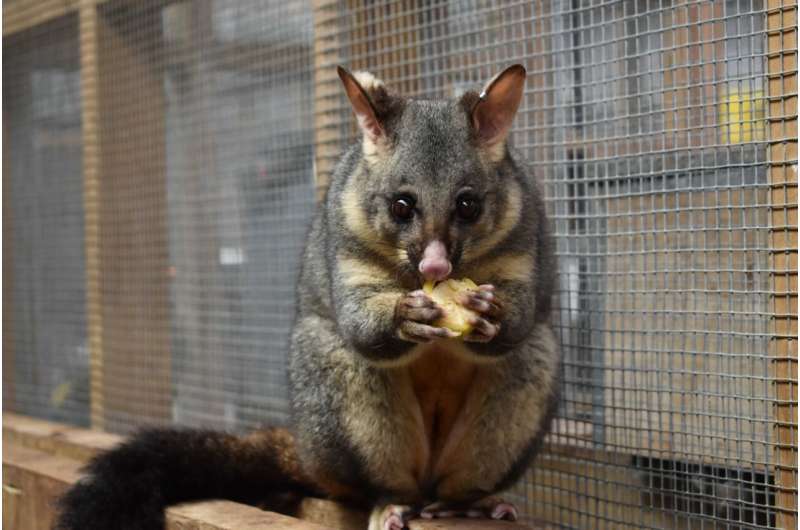This article has been reviewed according to Science X's editorial process and policies. Editors have highlighted the following attributes while ensuring the content's credibility:
fact-checked
peer-reviewed publication
trusted source
proofread
Researchers identify gene responsible for marsupial fur color

Fur is a defining characteristic of mammals, coming in a wide variety of colors and patterns—thanks to a world-first study, we now know which genes make a marsupial's coat black or gray.
Researchers from New Zealand's University of Otago—Ōtākou Whakaihu Waka and Manaaki Whenua Landcare Research analyzed brushtail possum DNA to better understand the evolution of fur color variation.
Published in Royal Society Open Science, the study built on the group's earlier work of sequencing the entire genome of the New Zealand brushtail possum.
Co-lead Dr. Donna Bond, of Otago's Department of Anatomy, says it is the first time anyone has looked at coat color genetic variation in a natural population of marsupials.
"Although marsupials—which include koalas and wombats—are quite distantly related to us, we think of them as cute and cuddly because of their fur. Our research now reveals why most of them have gray fur, but some are black.
"The color of a mammal's fur is intrinsic to its identity—knowing the molecular reasons why is important to relate it to other animal systems, particularly for understudied marsupials," she says.
Possums are one of the few marsupials where natural coat color variation exists. In Australia, where they are considered a cultural treasure, many Tasmanian possums are black, while on the mainland they are gray. In New Zealand, where they are considered a pest after being introduced in the 1850s to establish a fur trade, these subspecies interbreed at high rates.
"Due to this interbreeding, we knew we could pin down the genes responsible quite easily and provide a good model for other marsupials with coat color variation that are harder to study," Dr. Bond says.
But the work was not limited to just possums—the researchers also found the protein responsible for color variation, Agouti Signalling Protein (ASIP), is rapidly evolving in the carnivorous dasyurid marsupials.
Study director Associate Professor Tim Hore, also of Otago's Department of Anatomy, describes these animals as "perhaps the most colorful and interesting marsupials" based on their fur.
"You have the quolls who are spotted and can be either black or gray, and the famously striped tigers and devils with blotches from Tasmania.
"We can now connect rapid molecular evolution of coat color genes with the role of these carnivorous marsupials as predators needing to avoid detection from prey," he says.
Coat color variation is thought to have evolved in mammals many times over to fulfill certain functions.
"For a nocturnal animal like the possum, having black fur may help conceal it from predators in Tasmania, but perhaps this is not needed on the Australian mainland.
"As possums continue to adapt and evolve in New Zealand, where they don't have many predators other than humans, it will be interesting to see whether black or gray coat color is preferred in certain locations or not," Associate Professor Hore says.
*Possum skins and fur are a cultural treasure in Australia, where Southern Aboriginal tribes use their skins for cloaks, depicting images and stories of them throughout life. Historically, possum fur and skin were used to make balls for sports including marngrook, which some believe to be a founding influence in Australian Rules Football.
While possums are protected in Australia, they are considered a pest in New Zealand where possum fur and skin continue to be harvested due to its superior insulating properties.
More information: Donna M. Bond et al, Coat colour in marsupials: genetic variants at the ASIP locus determine grey and black fur of the brushtail possum, Royal Society Open Science (2024). DOI: 10.1098/rsos.240806
Journal information: Royal Society Open Science
Provided by University of Otago




















